Jodie Dalgleish – 27 July, 2011
On cue you can walk just below it, look up towards the ceiling, take in its many cell-like triangular components, and see the tiny cracks of bright white light that sometimes appear between them. You can watch it yaw in the breeze, and listen to it quietly whisper and creak.
Wellington
Gabby O’Connor
What Lies Beneath
2 July - 31 July 2011
Wellington-based artist Gabby O’Connor’s major sculptural installation What Lies Beneath shows her to be an adept explorer of the material and immaterial nature and qualities of gallery space. But more than that, it shows her to be an adept explorer of space as a more general concept that has fascinated theorists and artists since the internationally relevant and cross-disciplinary ‘spatial turn’ of the 1960s.
What Lies Beneath literally lies beneath the Hirschfeld gallery’s ceiling, below the loft of its central lightwell and the windows that give light and air to her work. It is a massive handmade and organic keel-like collection of thousands of specifically-sized paper triangles dyed in shades of blue-green, coated in shellac and stapled at multiple points, one to another. Like stained glass panes, its pieces combine to suffuse the gallery with the blue light of an above-water underwater world, a fragile yet indomitable world of paper and story.
As you enter the gallery O’Connor’s sculpture seems to float before you. The heel of its keel dynamically points forwards, towards the long run of it, referencing exploratory journeys made through time. On cue you can walk just below it, look up towards the ceiling, take in its many cell-like triangular components, and see the tiny cracks of bright white light that sometimes appear between them. You can watch it yaw in the breeze, and listen to it quietly whisper and creak.
O’Connor’s sculpture successfully brings a visitor’s consciousness and understanding of the gallery space to life, while it is brought to a fuller life in that space. Attention is drawn to the architecture of the space and its ability to enclose and enable an individual’s sensorial experience. But perhaps most effectively, attention is drawn to an artwork that produces the kind of space Lefebvre has described as a container of possible meanings, and a node on a network that brings together human knowledge and history in relation to real and imagined geographies. For What lies Beneath not only provides a window on a world that is hidden yet imagined and mythologized, but it also clearly evokes a southern pole encircled by floating masses of dynamic and multi-faceted sea ice, a frozen continent that appeared on maps centuries before Antarctica was first sighted in 1820.
New Zealand is not far from Antarctica: a geography that has been real to some and imagined by many. Some stories are well known, including that of Captain Robert Scott’s ill-fated expedition of 1912. After arriving at the South Pole little more than a month after Norwegian explorer Roald Amundsen, the remaining party of four perished in their tent only eleven miles from their food store, finally defeated by a blizzard. Only days before, the incapacitated Captain Lawrence Oates had sacrificed his life for the good of his colleagues, walking out of their tent and famously saying “I am just going outside and may be some time.” As O’Connor has said, she is mindful of this story and the fact that the explorers’ bodies and final camp, which was buried by a search party under a cross-topped snow cairn almost a century ago, could now be under thirty metres of ice and more than fifty kilometres from the location of their death. As the artist herself speculates, it is possible that one day their bodies will reach the Ross Sea and continue their journey within a monumental iceberg.
In the process of making What Lies Beneath, O’Connor has successfully considered and connected stories both told and yet to be told. With its many components and detailed construction, O’Connor’s work becomes the embodiment of a process, the following of a trajectory of thought. Indeed, its form and effect does reflect and transform the artist’s many months of reading, journal browsing and film watching. While dying and cutting templates from thousands of pieces of paper, she has allowed images and descriptions of Antarctica to immerse her in a space of light and ice, both material and imagined.
Extending the thought process and life of What Lies Beneath, companion works are being exhibited at The North Wall Arts Centre Gallery in Oxford, England and at Mahara Gallery in Waikanae. The North Wall installation evokes the possibility of Scott and his colleagues one day floating home to England, not in a single berg but in five smaller forms, a memorial for each. In engaging with this multi-locational play, O’Connor explores space as polylocative: as a series of locations, like nodes on a network, that fluctuate between the real and the imagined, and the past, present and future. With What Lies Beneath, and her other material imaginings, O’Connor brings the full life of space to the eye and consciousness in a way that I speculate, would delight no less than the late Lefebvre.
Jodie Dalgleish
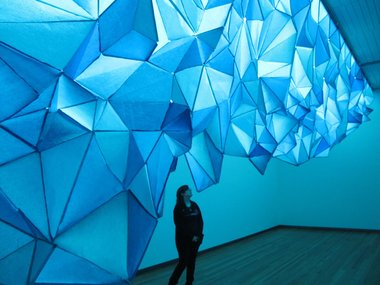

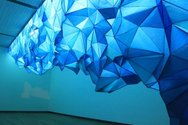



 Advertising in this column
Advertising in this column Two Rooms presents a program of residencies and projects
Two Rooms presents a program of residencies and projects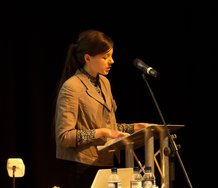
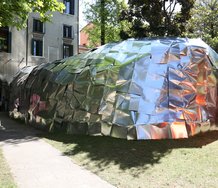
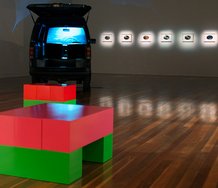
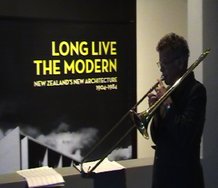
This Discussion has 0 comments.
Comment
Participate
Register to Participate.
Sign in
Sign in to an existing account.